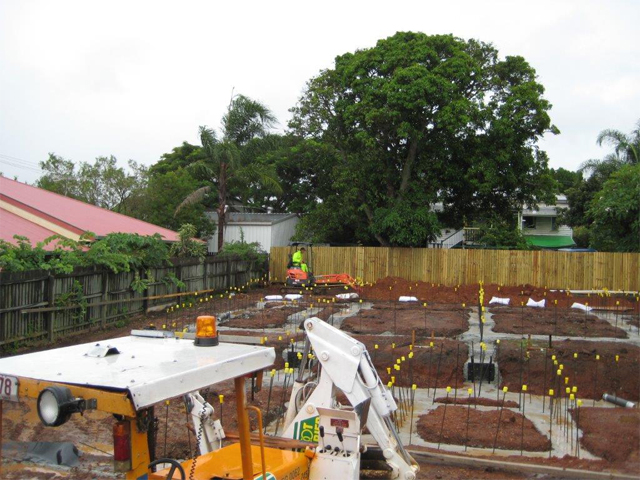ECONOMICAL FOUNDATIONS THAT MEET THE CODE AND WORK
On reactive clay sites keeping the foundations happy equates to minimizing moisture change.
Dr. Karl Terzaghi, known as the father of soils mechanics, brought engineering skills to the understanding of the soils on the earth's crust. He built on the work of D. Atterberg who developed the tests bearing his name. The Atterberg Limits provide us to this day with a device for identifying expansive soils. Dr. Terzaghi's work in the early decades of the 20th Century drew the attention of many civil engineers. A 1905 Massachusetts Institute of Technology (MIT) graduate, Willard E. Simpson, Sr., P.E., started correspondence dealing with the impact of these soils on building foundation.
Dr. Terzaghi's summation statement of "without moisture change there'd be no soil mechanics" had further confirmation with these expansive soils experiences.
The goal of our business has been create a barrier that will allow buildings and infrastructure to co habit happily side by side with
trees. Root barrier provides a flexible waterproof cut-off wall which separates the building foundations from the effect of plants and seasonal variation in clay soils.
Recently achieved civil engineering review, acceptance and subsequent issue of a Compliance certificate for building design or specification Form 15/16 Root Barrier. This gives a practical economic solution for Australian Standard, AS 2870-2011 Residential slabs and footings design considerations, related to seasonal variation and tree effect in reactive soils. This only applies to our specific product and system, beware of imitations.
To meet the building code a civil engineer must either design the structure to handle the changes created by reactive soil and tree effect or isolate the foundation from that effect. By creating an “island effect” under the structure moisture content remains stable and the soil mechanics minimized. The depth of the root barrier flexible cut-off wall is determined by the Geotech analysis of
the site, typically depths of 2, 3 or 4 meters is not unusual. The placement of the barrier is an engineering question and not within the competency of arborists or horticulturists.
The cut-off wall must be flexible, and able to handle extreme change, during our studies over 20 years of suitable materials many were tried and failed. Concrete, builders film, bentonite, sheet piling, clip together root barriers, recycled plastic barriers all had failures.
Technology has developed plastic materials that are amazing, the one product that never let us down is a special High Density Polyethylene (HDPE) made from virgin resin and with a 700% elongation, this is the product with has been accepted for the Form 15 Compliance certificate for building design or specification. The next challenge is to make sure that only competent people nominated by the design engineer complete the form 16 certification. Sometimes it is possible to have your cake and eat it too.
Website
Send Enquiry To Root Barrier



